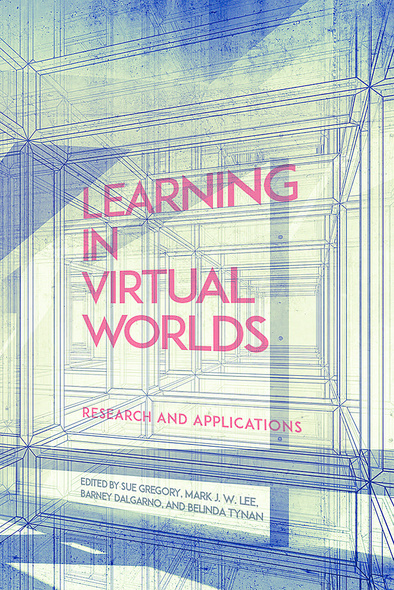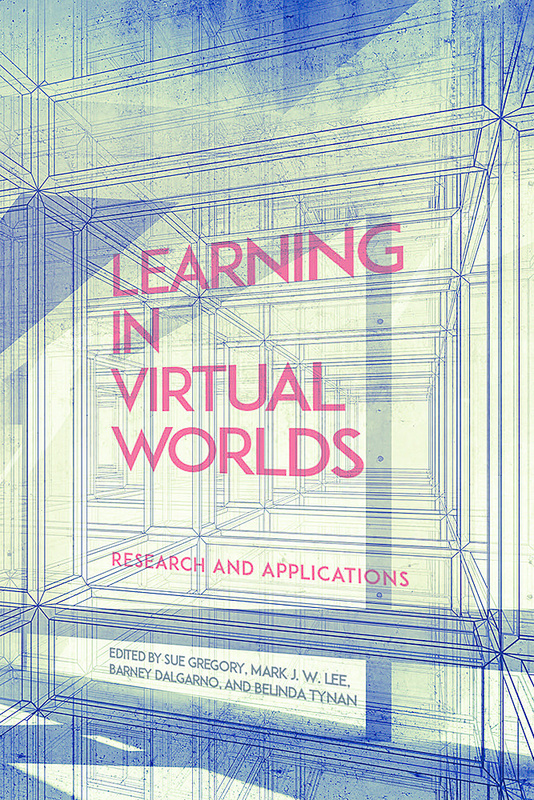
Learning in Virtual Worlds
Research and Applications
Three-dimensional (3D) immersive virtual worlds have been touted asbeing capable of facilitating highly interactive, engaging, multimodallearning experiences. Much of the evidence gathered to support theseclaims has been anecdotal but the potential that these environmentshold to solve traditional problems in online and technology-mediatededucation—primarily learner isolation and studentdisengagement—has resulted in considerable investments in virtualworld platforms like Second Life, OpenSimulator, and Open Wonderland byboth professors and institutions. To justify this ongoing and sustainedinvestment, institutions and proponents of simulated learningenvironments must assemble a robust body of evidence that illustratesthe most effective use of this powerful learning tool.
In this authoritative collection, a team of international expertsoutline the emerging trends and developments in the use of 3D virtualworlds for teaching and learning. They explore aspects of learnerinteraction with virtual worlds, such as user wayfinding in SecondLife, communication modes and perceived presence, and accessibilityissues for elderly or disabled learners. They also examine advancedtechnologies that hold potential for the enhancement of learnerimmersion and discuss best practices in the design and implementationof virtual world-based learning interventions and tasks. By evaluatingand documenting different methods, approaches, and strategies, thecontributors to Learning in Virtual Worlds offer importantinformation and insight to both scholars and practitioners in thefield.
Sue Gregory is associate professor and chair ofresearch in the School of Education at the University of New England,Australia. She lectures in ICT education, conducts research on the useof virtual worlds for learning and teaching, and leads the Australiaand New Zealand Virtual Worlds Working Group.
Mark J.W. Lee, adjunct senior lecturer with theSchool of Education at Charles Sturt University and immediate pasteditor-in-chief of MERLOT’s Journal of Online Learning andTeaching, has broad interests in learning sciences and technology,with a current focus on creative and playful pedagogies that transcendmultiple spaces, temporalities, and/or modalities.
Barney Dalgarno, Professor/Co-Director of theuImagine Digital Learning Innovation Laboratory at Charles SturtUniversity and co-lead editor of the Australasian Journal ofEducational Technology, has received national and internationalrecognition for his innovative research, teaching, and learning designusing leading-edge technologies.
Belinda Tynan, Pro Vice-Chancellor (Learning andTeaching) at The Open University in the United Kingdom, has heldmanagement positions at higher education institutions in four countriesacross three continents, and over the years has attracted considerablegrant funding as well as been responsible for multiple, large-scaleinnovation projects.
Contributors: Paul M. Baker, Francesca Bertacchini,Leanne Cameron, Chris Campbell, Helen S. Farley, Laura Fedeli, SueGregory, Christopher Hardy, Bob Heller, Vicki Knox, Shailey Minocha,Jessica Pater, Margarita Pérez García, Mike Procter, Torsten Reiners,Paul Resta, Corbin Rose, Miri Shonfeld, Ann Smith, Layla F. Tabatabaie,Assunta Tavernise, Robert L. Todd, Steven Warburton, and Stephany F.Wilkes.
List of Abbreviations vii
List of Tables and Figures ix
Acknowledgements xiii
Foreword xv
Introduction xix
PART ONE: HUMAN–COMPUTER INTERACTION
1 Navigation and Wayfinding in Learning Spaces in 3D Virtual Worlds/ Shailey Minocha and Christopher Hardy
2 Communication Modality, Learning, and Second Life / StephanyF. Wilkes
3 Virtual Body: Implications for Identity, Interaction, andDidactics / Laura Fedeli
4 (In)Accessible Learning in Virtual Worlds / Robert L. Todd,Jessica Pater, and Paul M. A. Baker
5 Benefits of Second Life in the Ageing Population / AnnSmith
6 The Reality of Authentic Learning in Virtual Worlds / Helen S.Farley
PART TWO • ADVANCED TECHNOLOGY
7 Conversational Agents in Second Life: Freudbot / Bob Heller,Mike Procter, and Corbin Rose
8 Virtual Bots: Their Influence on Virtual Worlds, and How They CanIncrease Interactivity and Immersion through VirtualPREX / TorstenReiners, Sue Gregory, and Vicki Knox
PART THREE • LEARNING DESIGN ANDIMPLEMENTATION
9 Analyzing Teaching Practices in Second Life: A Design Taxonomy forthe Implementation of Workshops in Virtual Worlds / StevenWarburton and Margarita Pérez García
10 Netconnect Virtual Worlds: Results of a Learning Experience /Francesca Bertacchini and Assunta Tavernise
11 Scaffolding Learning Through the Use of Virtual Worlds /Chris Campbell and Leanne Cameron
12 Challenges and Strategies in Designing Cross-national Learning:Team Projects in Virtual Worlds / Paul Resta and MiriShonfeld
13 Introduction to Laws Relevant to Virtual Worlds in HigherEducation / Layla F. Tabatabaie
Conclusion 295
List of Contributors 307
Index 315




